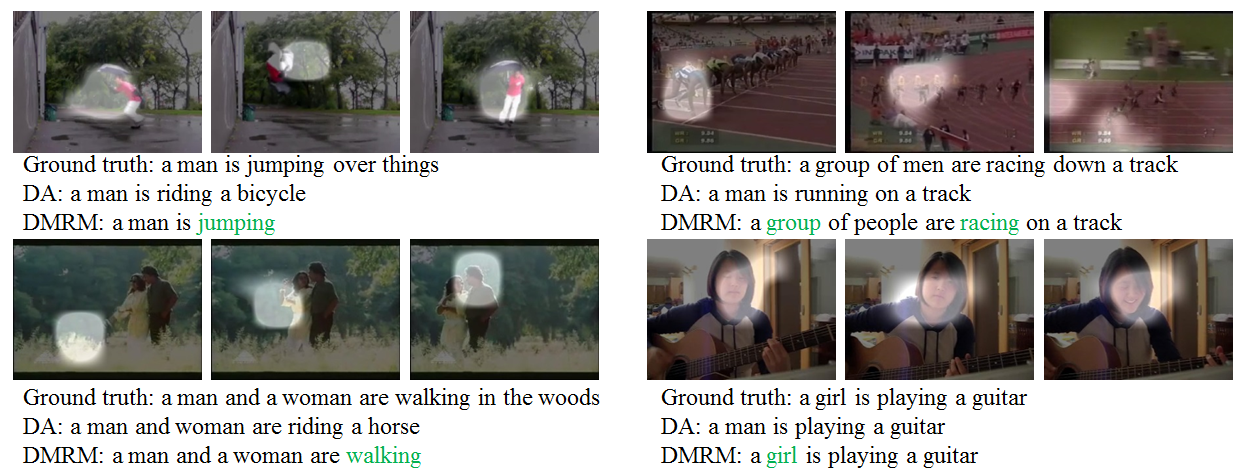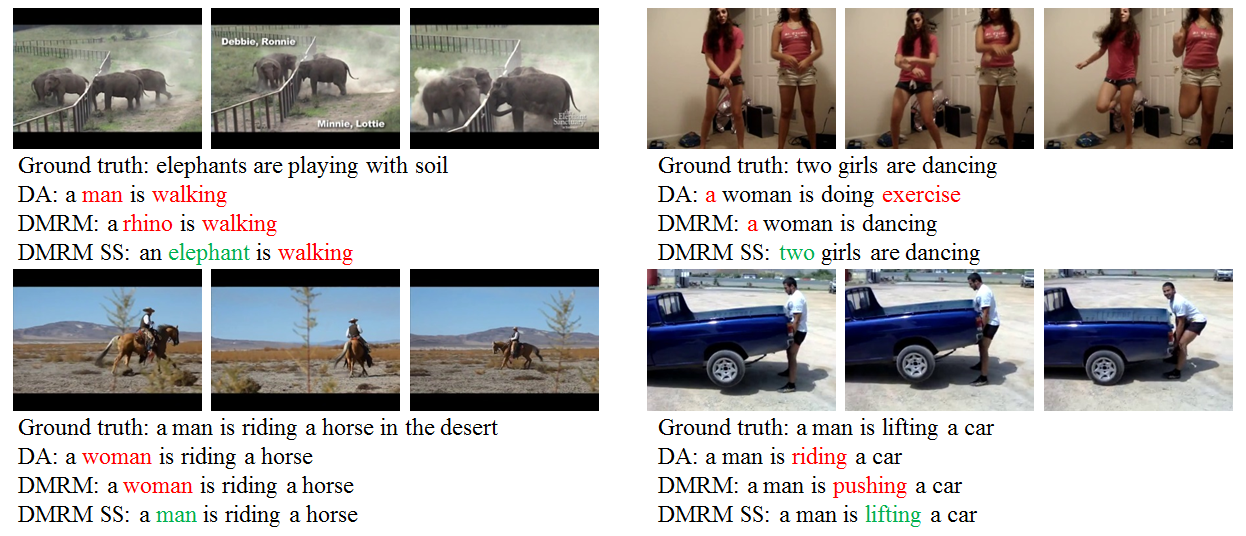Catching the Temporal Regions-of-Interest for Video Captioning
ACM MM2017 Full Paper with Oral Presentation (Best Paper Presentation)
Ziwei Yang, Yahong han, Zheng Wang - Tianjin University
Abstract
As a crucial challenge for video understanding, exploiting the spatial-temporal structure of video has attracted much attention recently, especially on video captioning. Inspired by the insight that people always focus on certain interested regions of video content, we propose a novel approach which will automatically focus on regions-of-interest and catch their temporal structures. In our approach, we utilize a specific attention model to adaptively select regions-of-interest for each video frame. Then a Dual Memory Recurrent Model (DMRM) is introduced to incorporate temporal structure of global features and regions-of-interest features in parallel, which will obtain rough understanding of video content and particular information of regions-of-interest. Since the attention model could not always catch the right interests, we additionally adopt semantic supervision to attend to interested regions more reasonably. We evaluate our method for video captioning on two public benchmarks: Microsoft Video Description Corpus (MSVD) and Montreal Video Annotation (M-VAD). The experiments demonstrate that catching temporal regions-of-interest information really enhances the representation of input videos and our approach obtains the state-of-the-art results on popular evaluation metrics like BLEU-4, CIDEr, and METEOR.
Code
!!!Archive of ACM MM Reproducibility
The original code is on here.
Our experiments are implemented using the Torch Framework.
Datasets
The datasets used in the paper are available at the following links:
-
Microsoft Video Description Corpus (MSVD or Youtube2text):
Raw Data
Page - http://www.cs.utexas.edu/users/ml/clamp/videoDescription/
[Raw Corpus]
[Processed Data]
Attention:The processed data is not ours. We just use the processed corpus from this page.
Montreal Video Annotation Description (M-VAD) Dataset:
http://www.mila.umontreal.ca/Home/public-datasets/montreal-video-annotation-dataset
Reference
If you find this useful in your work, please consider citing the following reference:
@inproceedings{dmrmyangMM17,
title = {Catching the Temporal Regions-of-Interest for Video Captioning},
author = {Yang, Ziwei and Han, Yahong and Wang, Zheng},
booktitle = {Proceedings of the ACM International Conference on Multimedia (ACM MM)},
year = {2017}
}


